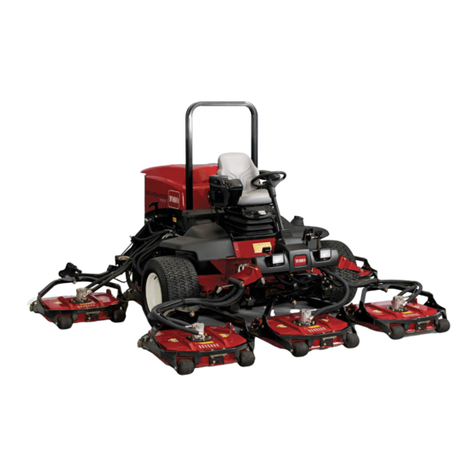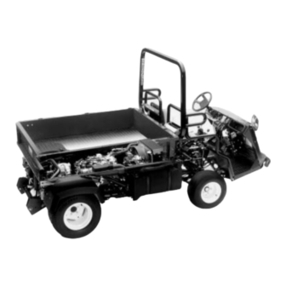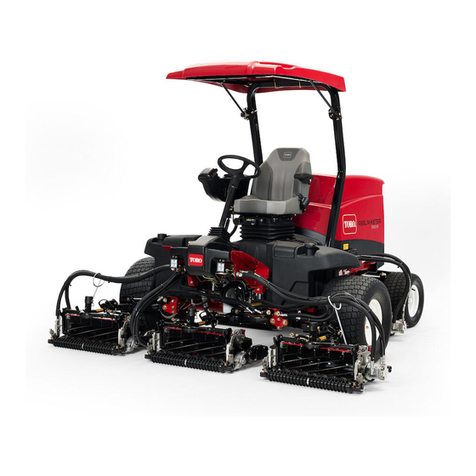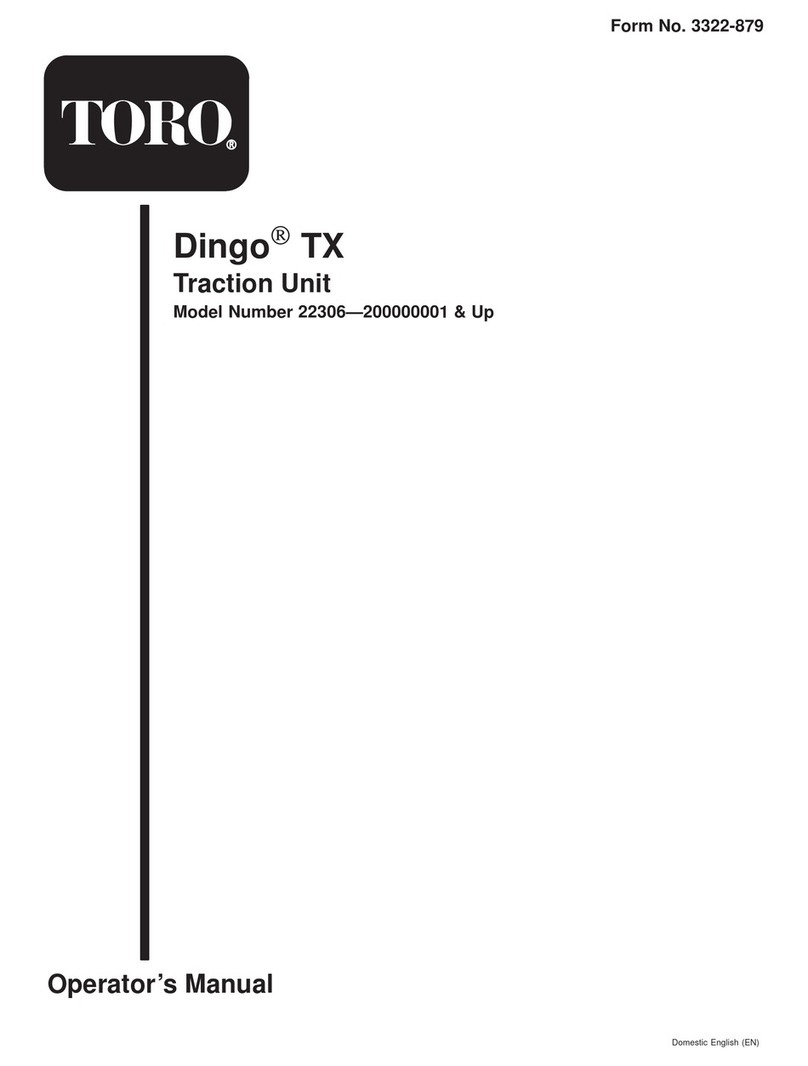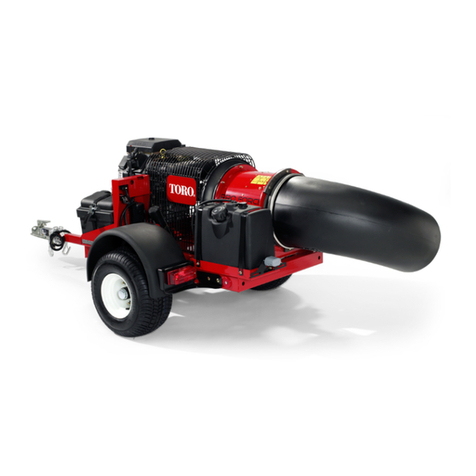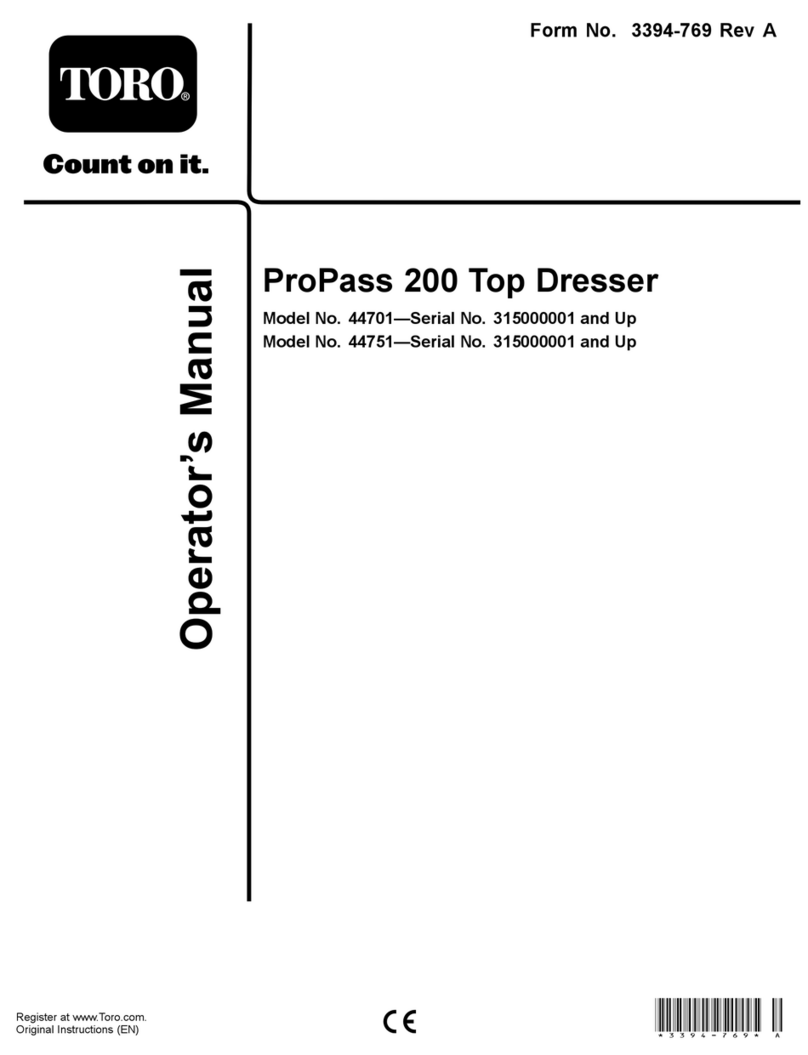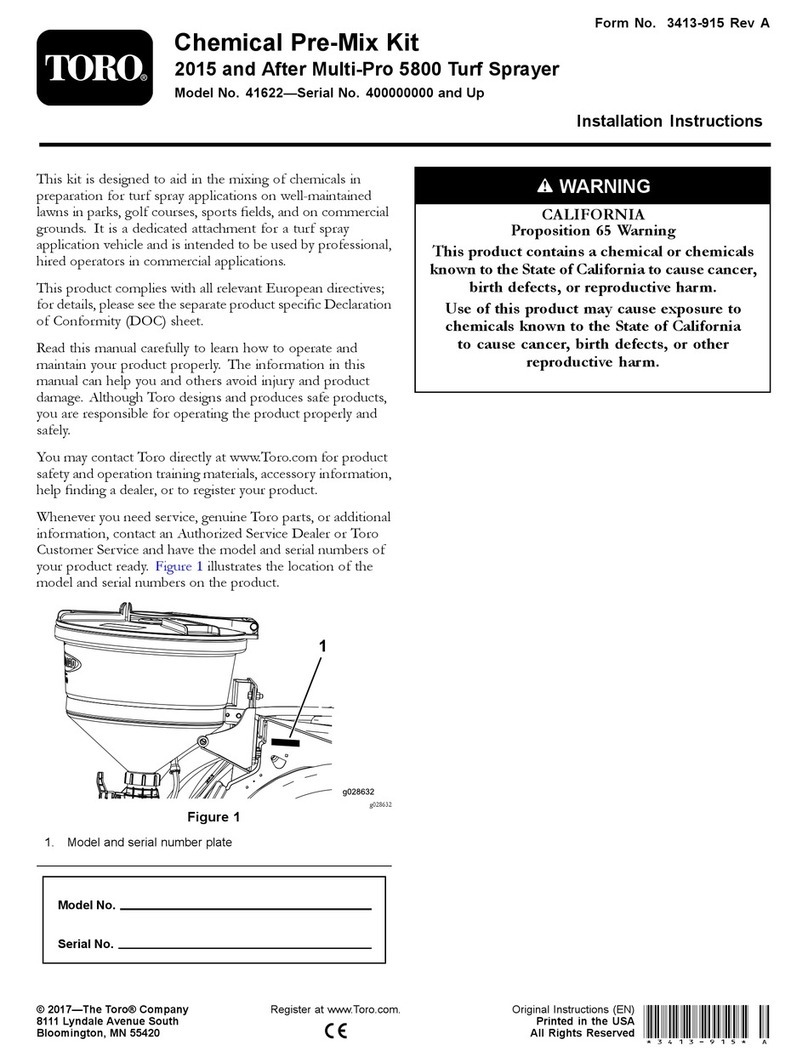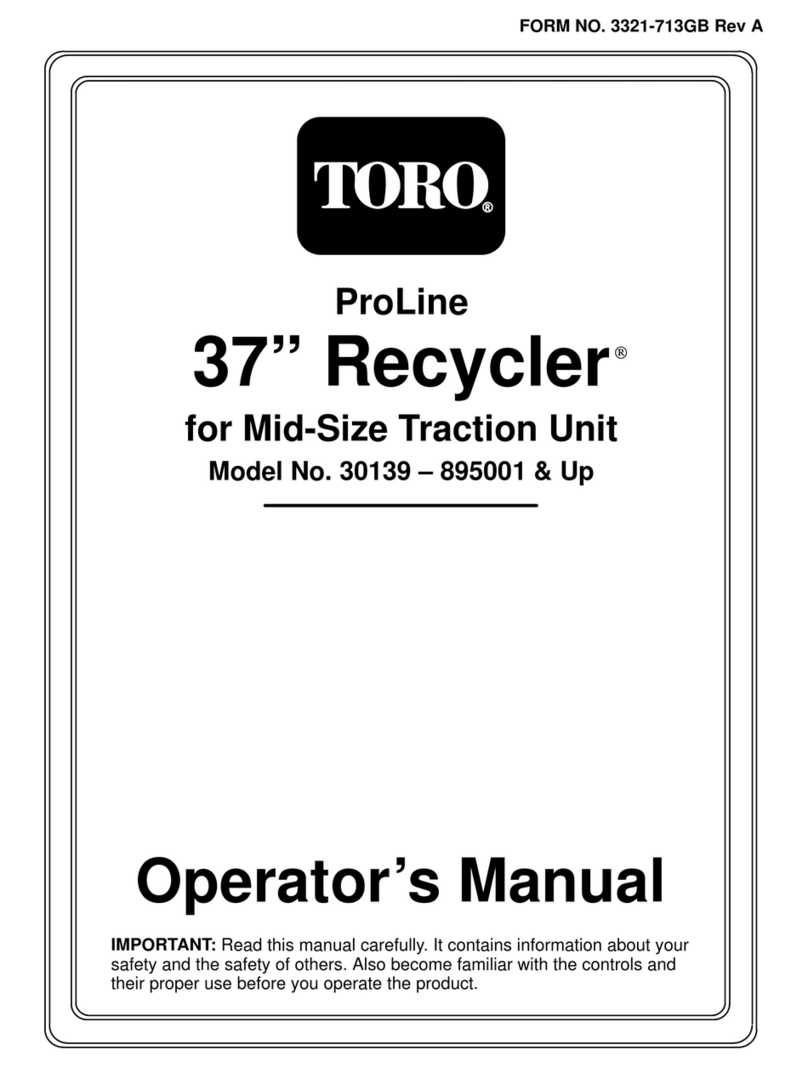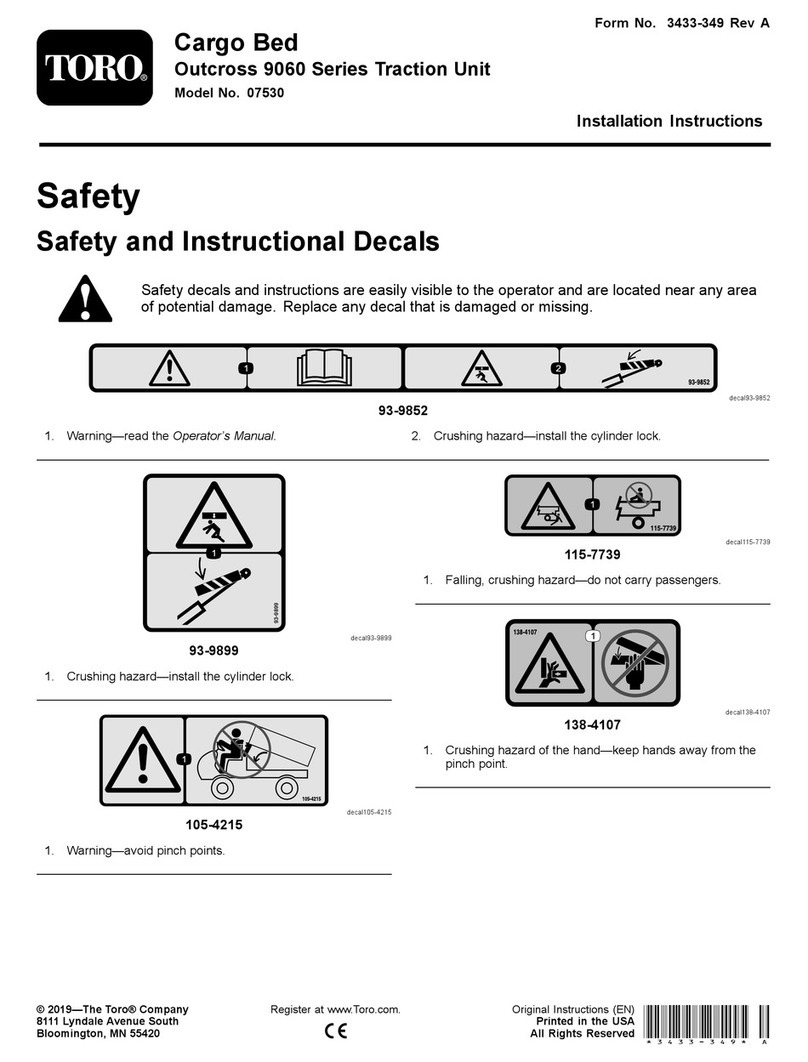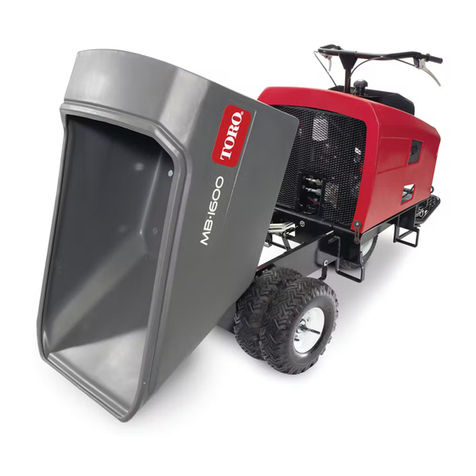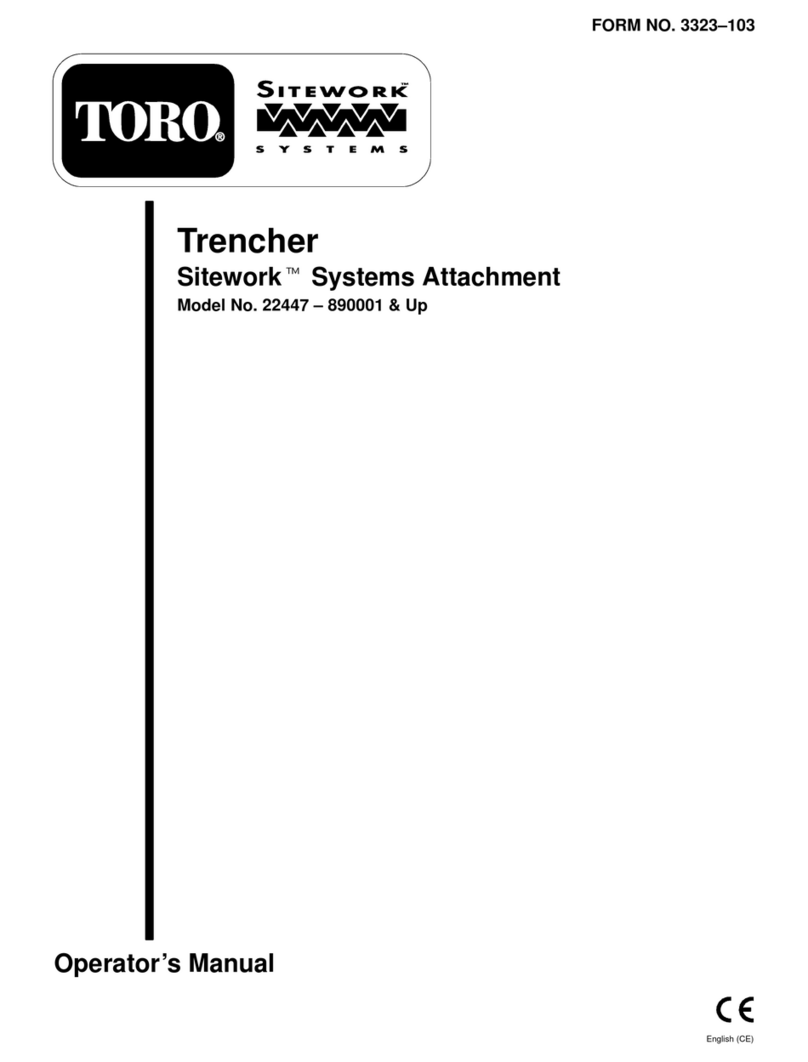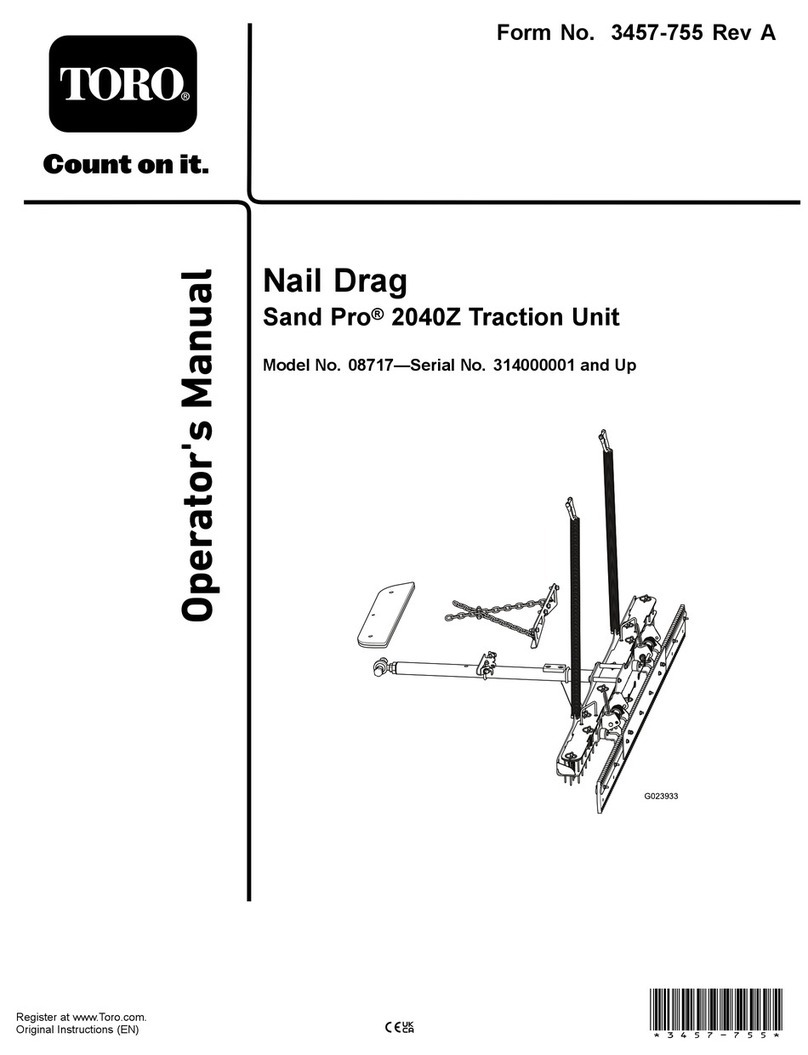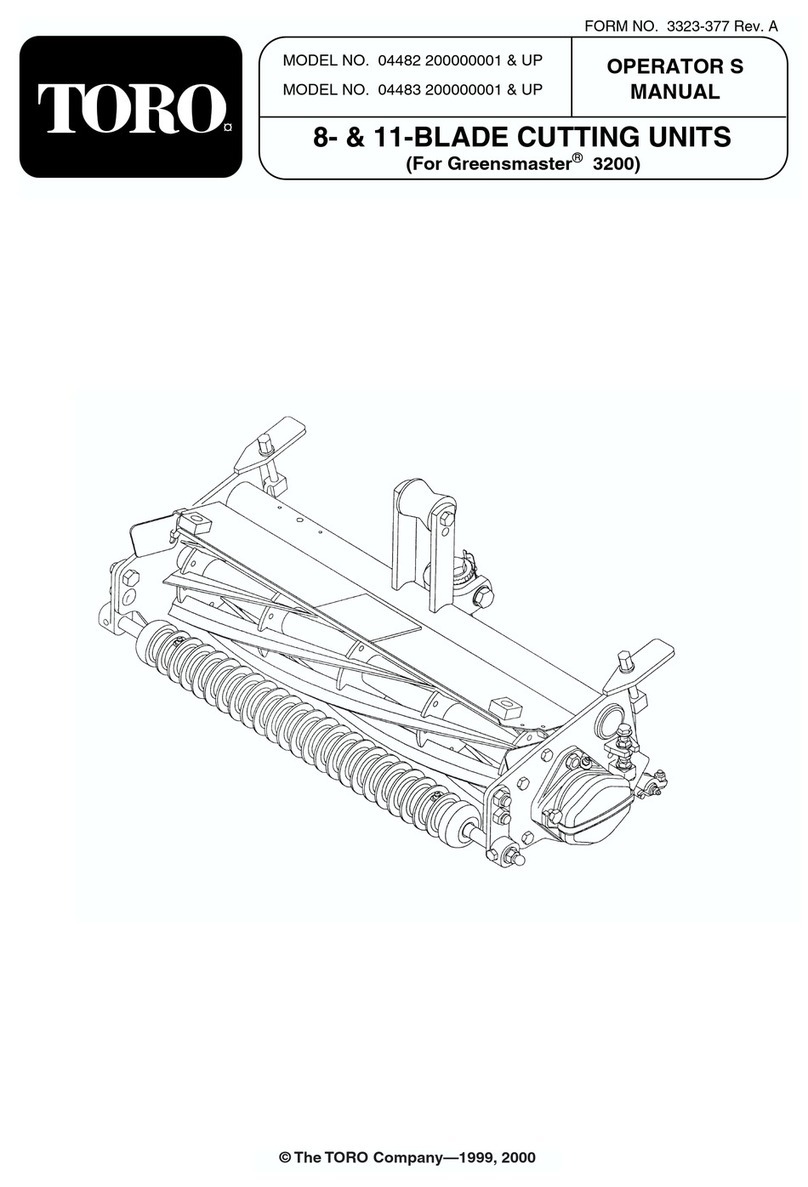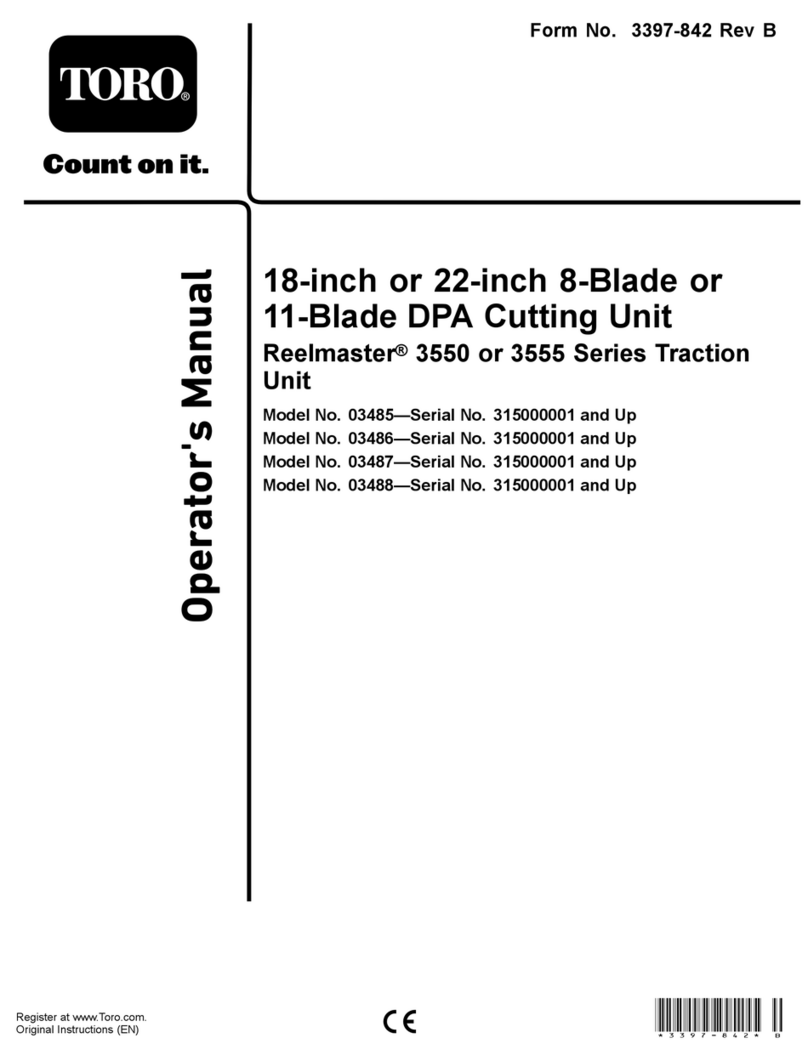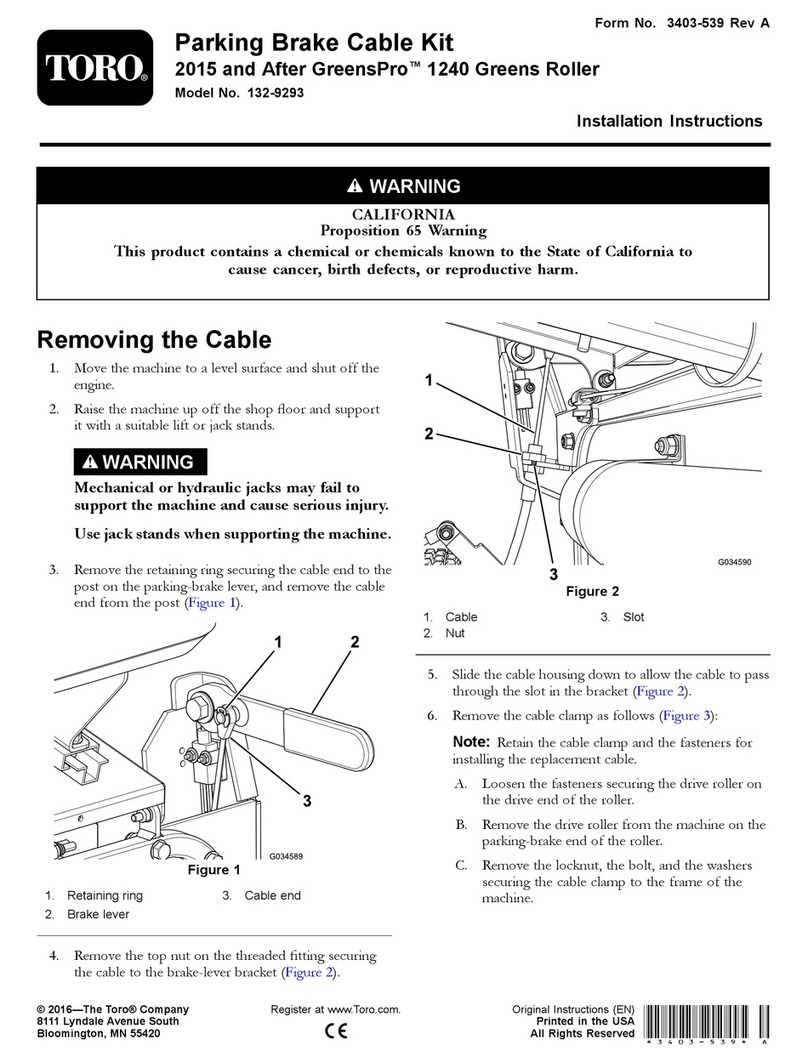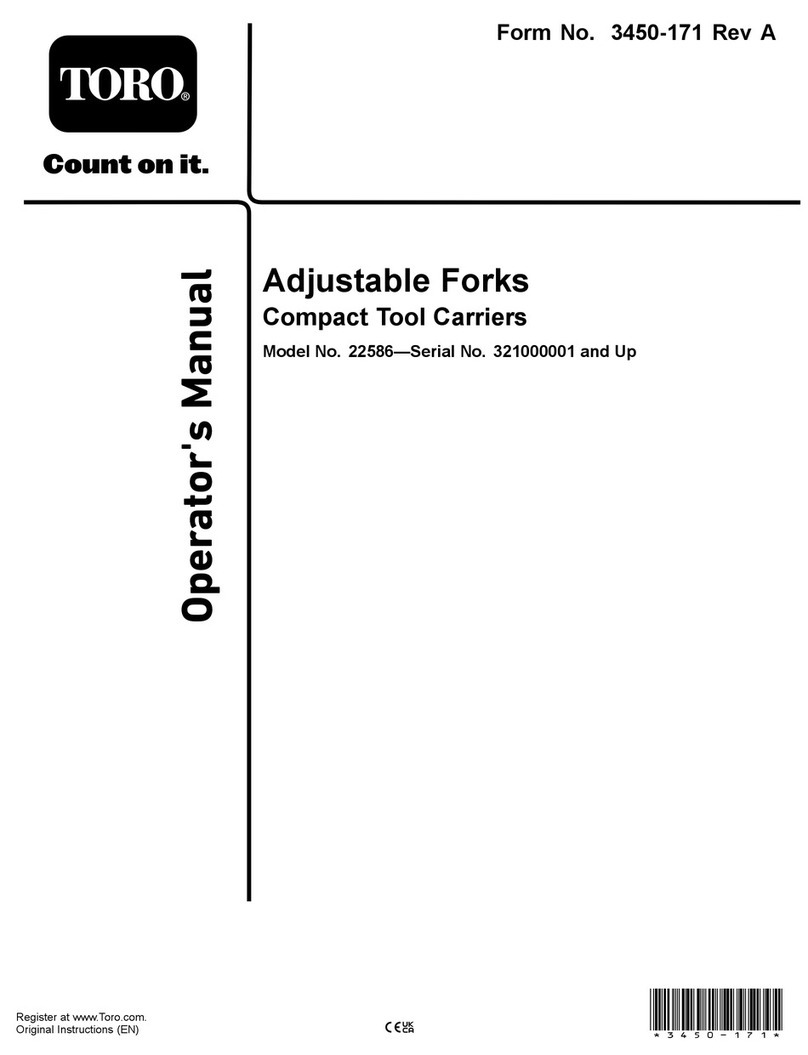
7
20. Do not touch Engine, Muffler, or Muffler
Shield while engine is running or soon after it has
stopped because these areas may be hot
enough to cause burns.
21. If the vehicle ever vibrates abnormally, stop
immediately, turn off engine, wait for all motion
to stop, and inspect for damage. Repair all
damage before commencing operation.
22. Before getting off the seat:
A. Stop movement of the vehicle.
B. While braking, set Parking Brake and
place range selector in the Neutral position.
C. Shut engine off and wait for all movement
to stop.
D. Remove Key from Ignition Switch.
E. Do not park on slopes unless wheels are
chocked or blocked.
SAFETY AND INSTRUCTIONS
28. Before disconnecting or performing any
work on the hydraulic system, all pressure in the
system must be relieved by stopping the engine.
29. If major repairs are ever needed or assistance
is required, contact an Authorized TORO
Distributor.
30. Disconnect battery before servicing the
vehicle. If battery voltage is required for
troubleshooting, temporarily connect the battery.
31. If the engine must be running to perform
maintenance, or an adjustment, keep hands, feet,
clothing, and any parts of the body away from
the engine and any moving parts. Keep everyone
away.
32. Do not over-speed engine by changing
Governor settings. Maximum engine speed is
3350 no-load rpm. To assure safety and
accuracy, have an Authorized TORO Distributor
check maximum engine speed with a tachometer.
33. Shut engine off before checking or adding
oil to the crankcase.
34. To assure optimum performance and
continued safety of the vehicle, always use
genuine TORO replacement parts and
accessories. Replacement parts and accessories
made by other manufacturers could be
dangerous. Altering this vehicle in any manner
may affect the vehicle's operation, performance,
durability, or its use may result in injury or death.
Such use could also void the product warranty
of the TORO Company.
35. This vehicle should not be modified without
The TORO Company's authorization. Direct any
inquiries to:
Hahn Equipment Co.
A subsidiary of The TORO Company
1625 N. Garvin Street
Evansville, IN 47711-4596
MAINTENANCE:
23. Before servicing, lubricating or making
adjustments to the vehicle, stop engine, set
Parking Brake and remove Key from Ignition
Switch to prevent someone from accidentally
starting the engine.
24. Make sure the vehicle is in safe operating
condition, keeping all nuts, bolts, and screws
tight.
25. To reduce potential fire hazard, keep the
engine area free of excessive grease, grass,
leaves, and accumulation of dirt. Do not wash a
warm engine or electrical components.
26. Make sure all hydraulic line connectors are
tight, and all hydraulic hoses and lines are in
good condition before applying pressure to the
system.
27. Keep body and hands away from any pin
hole leaks in hydraulic lines that may eject high
pressure transaxle fluid. Use cardboard or paper
to find hydraulic leaks. Transaxle fluid escaping
under pressure can penetrate skin and cause
injury. Fluid accidentally injected into the skin
must be surgically removed within a few hours
by a doctor familiar with this form of injury, or
gangrene may result.
L. Watch out for and avoid low overhangs
such as tree limbs, door jambs, overhead
walkways, etc. Make sure there is enough room
overhead to easily clear the vehicle and your
head.
M. If ever unsure about safe operation,
STOP WORK and ask your supervisor.

